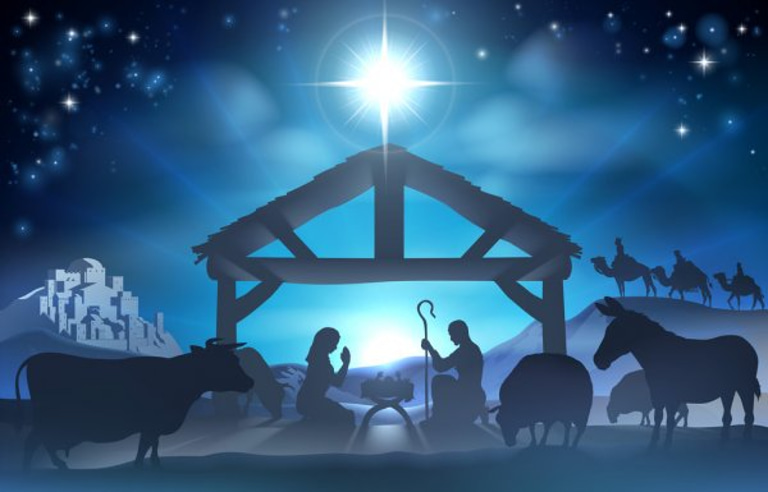Church of the Nativity Bethlehem: Everything You Need to Know
Explore the Church of the Nativity in Bethlehem—history, architecture, traditions, and top tips for planning your 2025 pilgrimage.
8/25/202513 min read
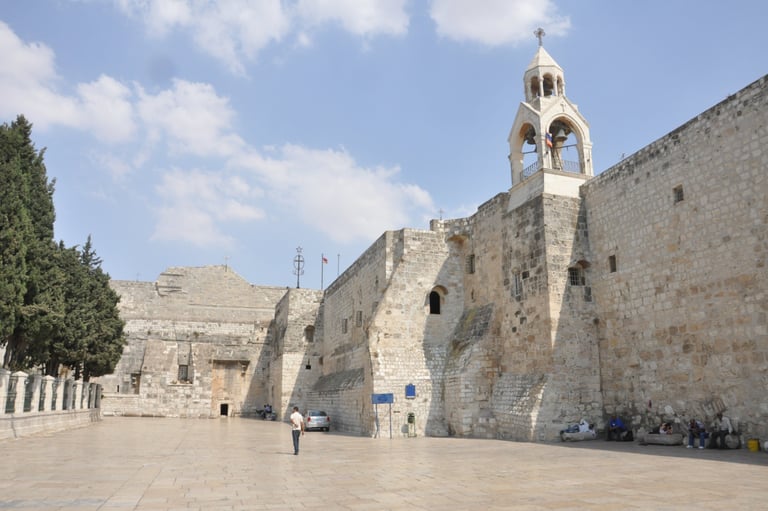

FAQ: Church of the Nativity Visitor Guide
1. Where is the Church of the Nativity located?
The Church of the Nativity is in Bethlehem, West Bank, about 10 km south of Jerusalem, centered around Manger Square and surrounded by key Christian landmarks.
2. Why is the Church of the Nativity significant?
It marks the traditional birthplace of Jesus Christ and has been a pilgrimage site for nearly 2,000 years, reflecting centuries of Christian faith, art, and devotion.
3. What should visitors know before going?
Expect security checks, modest dress, and potential crowds during festivals; early mornings or shoulder seasons offer calmer visits, and guided tours enhance historical understanding.

Introduction
Step inside one of Christianity’s most iconic landmarks—the Church of the Nativity in Bethlehem! From its 4th-century roots to its UNESCO World Heritage status, this sacred site has fascinated pilgrims, history buffs, and curious travelers for centuries. In this guide, you’ll discover its stunning mosaics, ancient grotto, rich traditions, and practical tips to make your visit truly unforgettable.
Overview and Location of the Church of the Nativity
Visiting the Church of the Nativity is like stepping into a living tapestry of history and faith. Nestled in the heart of Bethlehem, this sacred site has inspired pilgrims for centuries, and knowing a bit about its location and layout can make your visit far more meaningful.
Geographic Context
The church sits in Bethlehem, in the West Bank, just about 10 kilometers south of Jerusalem. From the moment you approach, you’ll notice its connection to the bustling life of the city, especially around Manger Square, which is surrounded by several important Christian landmarks. As someone who has wandered these streets many times, I love observing how the daily rhythm of local life blends seamlessly with centuries of tradition. It’s a reminder that history isn’t static—it’s lived, breathed, and celebrated every day.
How to Get There
Getting to the Church of the Nativity can feel like part of the adventure itself. There are several options:
Taxis and private cars are quick and convenient if you prefer flexibility.
Buses and shared shuttles from Jerusalem are budget-friendly and often drop you near Manger Square.
Guided tours offer historical context and a smoother experience navigating the checkpoints.
Pro Tip: If it’s your first visit, allow extra time for checkpoints and local traffic. Even seasoned travelers find this part of the journey adds to the sense of pilgrimage—patience here enhances the experience rather than detracts from it.
The Church Complex Layout
Once you arrive, the Church of the Nativity reveals its layered history through its architecture and spaces:
The Basilica dominates the skyline with its familiar stone façade and bell towers.
The Grotto of the Nativity, a small, sacred cave beneath the church, marks the traditional birthplace of Jesus.
Chapels and courtyards invite quiet reflection and provide insight into centuries of Christian devotion.
For first-time visitors, it’s helpful to note the pilgrims’ entry points and orient yourself before exploring. Walking through these spaces, I always recommend pausing to absorb the atmosphere—there’s a palpable sense of continuity, as if generations of visitors are whispering their stories alongside you.
Insight for families and Nativity enthusiasts: Observing the layout can inspire ideas for your outdoor Christmas Nativity displays at home. Seeing how sacred spaces are structured—balancing accessibility, reverence, and storytelling—can spark creative ways to engage children with your own Nativity scene.
If you’re curious about exploring further, consider pairing your visit with guided materials on historical Nativity traditions or a small book highlighting Bethlehem’s Christian heritage—these subtle resources deepen your appreciation and make the experience unforgettable.
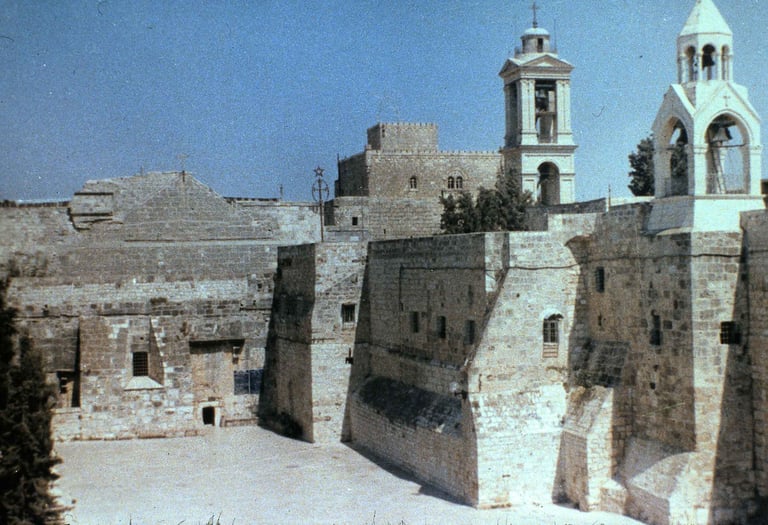

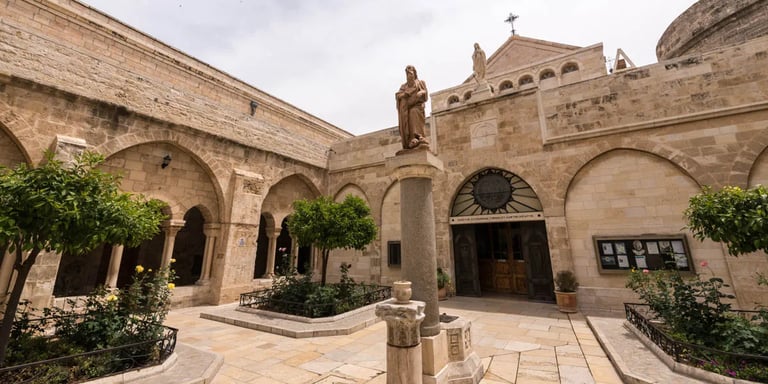

Historical Background: From the 4th Century to Today
The Church of the Nativity is more than a building—it’s a living witness to nearly two millennia of faith, devotion, and human history. Exploring its story allows us to connect with the countless pilgrims who have revered this sacred site throughout the centuries.
Founding and Byzantine Era
The church’s origins trace back to 327–333 AD, when Constantine the Great and his mother, Empress Helena, commissioned its construction. The original structure was a classic Byzantine basilica, complete with three aisles, intricate mosaics, and carefully placed altars that guided worshippers’ movements. Walking through the modern church, I often imagine the vibrant colors and sacred rituals that once filled these spaces—a window into the spiritual life of early Christians.
Pro Tip: For families exploring Nativity traditions, thinking about the church’s original layout can help children understand the significance of different figures and spaces in your own Nativity set for families.
Crusades and Medieval History
The church didn’t escape the turbulence of the Crusader period (11th–12th centuries). It underwent structural changes, suffered damage during conflicts, and became a strategic religious site in the region. Despite these challenges, dedicated restoration efforts preserved its spiritual and architectural integrity. For me, this era highlights how faith and resilience often go hand-in-hand, a lesson reflected in the care taken by families to pass Nativity traditions down through generations.
Ottoman Period and Later History
The 16th century brought further modifications, including bell towers, fortified walls, and frescoes. Under the Ottoman millet system, religious communities received protection, allowing Christians to maintain worship practices and safeguard the church. I find this period fascinating—it shows how cultural and political frameworks can support the endurance of sacred traditions, much like careful stewardship preserves our cherished Nativity scenes at home.
Modern Preservation and UNESCO Status
Today, the Church of the Nativity is recognized as a UNESCO World Heritage site (2012), a testament to its universal significance. Recent restoration projects have focused on stabilizing the structure, restoring ceilings and mosaics, and balancing the needs of pilgrims with responsible tourism.
Insight for Nativity lovers: Observing the delicate preservation work can inspire how you handle your own outdoor Christmas Nativity display tips. Think about placement, weather protection, and the gentle care needed to keep treasured figures looking their best year after year.
For those eager to dive deeper, consider pairing a visit with resources on historical Nativity traditions—from Byzantine mosaics to medieval storytelling techniques—to enrich your understanding and appreciation of this remarkable site.
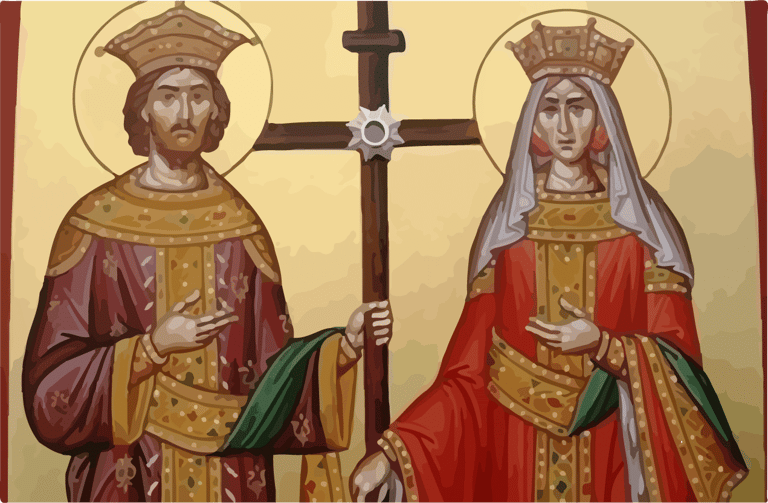

Religious Significance in Christianity
For anyone drawn to Nativity history and traditions, the Church of the Nativity is profoundly moving—it marks the birthplace of Jesus Christ, a cornerstone of Christian faith. Visiting the site is more than sightseeing; it’s a journey into centuries of devotion and storytelling that still resonate today.
Birthplace of Jesus Christ
At the heart of the church lies the Grotto of the Nativity, traditionally revered as the place where Jesus was born. Stepping into this sacred cave, I often pause to reflect on the biblical accounts and the theological weight of this moment. The modesty of the setting, contrasted with the elaborate basilica above, reminds me that the story of the Nativity is both humble and monumental—a lesson that comes alive when you create your own Nativity set for families at home.
Pro Tip: When introducing children to Nativity traditions, showing them images of the Grotto or sharing the story of its preservation can make the experience more tangible and meaningful.
Denominational Perspectives
The Church of the Nativity is unique in that it is shared by several Christian communities, including the Greek Orthodox, Roman Catholic, and Armenian Apostolic churches. Each tradition brings its own rituals, iconography, and custodial practices, yet they all work together to maintain this sacred site. Observing this cooperation firsthand offers a beautiful reminder of how different perspectives can coexist around shared reverence—a principle you can bring into your own family Nativity celebrations, honoring different interpretations and customs.
Pilgrimages and Religious Festivals
Throughout the year, the church becomes the focal point for vibrant pilgrimages and festivals. From midnight Mass on Christmas Eve to Epiphany rituals and international pilgrimage routes, the energy is palpable. I’ve found that visiting during these celebrations, even virtually, can inspire creative ways to involve children in your own historical Nativity traditions—like reenacting scenes, exploring different cultural depictions of the Nativity, or hosting a small family reflection around your display.
Insight for Nativity enthusiasts: Experiencing or learning about these pilgrimages emphasizes how the Nativity story continues to unite people across the globe. It’s a reminder that every carefully arranged outdoor Christmas Nativity display or tabletop set at home is part of a much larger, enduring tradition.
For those wanting to dive deeper, consider pairing your visit—or your family’s Nativity setup—with books or guides on Christian pilgrimage practices and festival customs, which enrich understanding and bring history to life in a personal, engaging way.
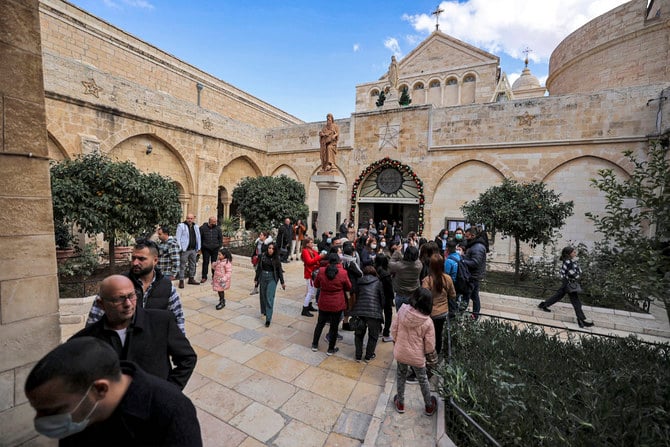

Architecture and Restoration
Exploring the architecture of the Church of the Nativity is like reading a layered story written in stone, wood, and mosaic. Every corner reflects centuries of faith, artistry, and devotion, offering inspiration for anyone passionate about historical Nativity traditions or crafting their own meaningful displays at home.
Basilica Architecture
The church’s design follows the classic Byzantine basilica layout, featuring a central nave, flanked by aisles, and terminating in an apse with a transept. The orientation and symbolic elements were carefully chosen to reflect theological principles, guiding worshippers physically and spiritually through the space.
Walking through the basilica, I often imagine the countless pilgrims who have followed these same pathways for centuries. For families setting up a Nativity scene, understanding this thoughtful arrangement can spark ideas for positioning figures, creating a sense of reverence and storytelling in your own display.
Grotto and Underground Features
Beneath the basilica lies the Grotto of the Nativity, marked by a silver star indicating Jesus’ birthplace. Over time, various Christian denominations have added chapels and altars, creating a rich tapestry of devotional practices in a single sacred site.
Pro Tip: For children and Nativity enthusiasts, pointing out how different communities honor the same story can deepen appreciation and inspire creative ways to include diverse figures or traditions in your family Nativity set.
Artistic Highlights
From the intricate mosaic floors to centuries-old frescoes and icons, the church is a treasure trove of sacred art. Restoration work has carefully preserved these masterpieces, balancing historical accuracy with structural safety. I’ve always found it fascinating how subtle techniques—like color consolidation and protective coatings—allow medieval art to shine for modern visitors.
Conservation Challenges
Centuries of visitors and exposure have naturally taken a toll on the structure. Structural stress, humidity, and heavy foot traffic require ongoing care. UNESCO and international partners have stepped in to guide restoration, ensuring the church remains stable while honoring its spiritual and artistic heritage.
Insight for Nativity lovers: Watching these preservation efforts reminds me that careful stewardship is essential, whether it’s for a historic church or your own outdoor Christmas Nativity display. Thoughtful placement, gentle handling, and protective measures can keep cherished figures looking beautiful year after year.
For those looking to expand their understanding, consider pairing your visit with resources on Byzantine architecture and medieval religious art, which can enrich both your historical knowledge and your creative approach to Nativity displays at home.
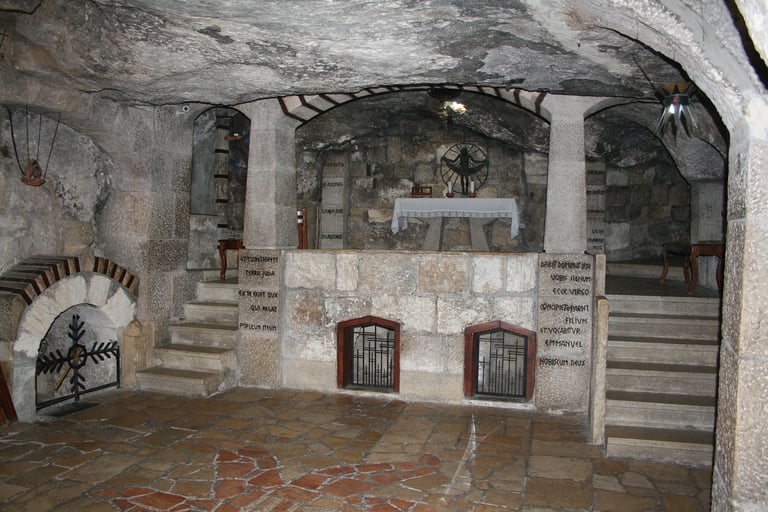

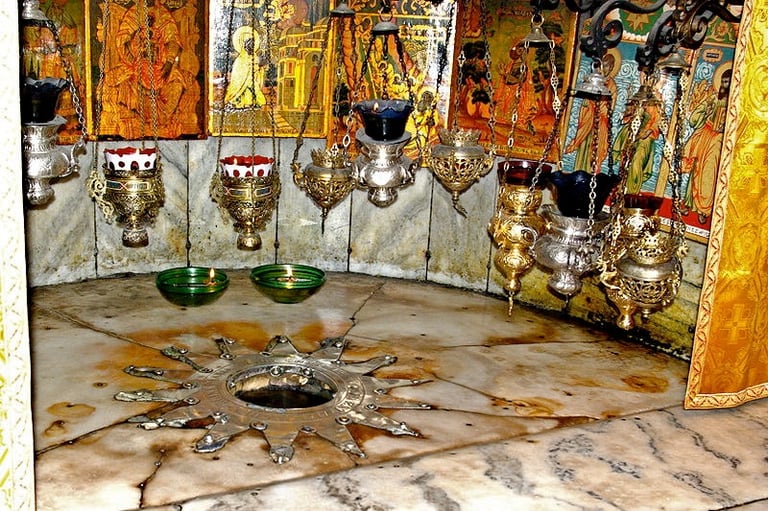

What to Expect When Visiting
Visiting the Church of the Nativity is a deeply moving experience, and a little preparation can make your time there far more meaningful. From practical logistics to respectful engagement, knowing what to expect helps you focus on the history, faith, and artistry of this sacred site.
Entry and Security
The church welcomes visitors throughout the day, with opening hours and guided tour options designed to accommodate both casual tourists and devoted pilgrims. Most visitors enter through designated points, and security checks are routine—part of maintaining a safe space for everyone.
Pro Tip: If it’s your first visit, allow extra time for security procedures. I’ve found that arriving early not only reduces wait times but also gives you a quieter, more reflective experience of the basilica and grotto.
Dress Code and Etiquette
Out of respect for this sacred site, modest clothing is recommended—shoulders and knees covered are appreciated in all areas of the church. Photography is generally allowed in public spaces, but certain chapels or liturgical services may restrict it.
For families visiting with children, gently explaining these guidelines beforehand turns it into a teaching moment about respectful participation in religious traditions, enhancing the spiritual experience for everyone.
Crowds and Timing
The church can be busy during Christmas, Epiphany, and major Christian festivals, while quieter periods in spring or autumn offer a more intimate experience. Planning your visit around these rhythms makes a noticeable difference.
Insider Tip: Early morning visits or weekday afternoons often mean shorter lines and calmer courtyards. Even during peak seasons, moving patiently and allowing time for reflection can transform the visit from rushed sightseeing into a memorable spiritual journey.
Accessibility Considerations
The church’s ancient architecture poses challenges for some visitors. Elderly and mobility-impaired guests may encounter stairs or uneven floors, though ramps and accessible pathways are increasingly available. For families or group visits, checking ahead for accessibility services ensures everyone can participate comfortably.
Insight for Nativity enthusiasts: Thinking about accessibility also informs how we set up our own home Nativity displays—ensuring all family members, including children and elderly relatives, can enjoy and interact with the scene safely.
For a richer experience, consider pairing your visit with a small guidebook on historical Nativity traditions or architectural highlights, giving you context and stories that bring every step of the pilgrimage to life.
Cultural Traditions Connected to the Church
The Church of the Nativity is more than a historic site—it’s a living center of culture, faith, and community. Visiting or learning about it offers a window into centuries of traditions that continue to inspire both locals and pilgrims from around the world.
Local and Pilgrim Practices
Bethlehem’s streets and courtyards come alive with processions, candle-lighting ceremonies, and devotional activities. Walking among these gatherings, I’m always struck by the blending of solemn ritual and joyful celebration. Folk stories and legends connected to the Nativity site—passed down through generations—add a layer of enchantment, making every visit feel like stepping into a living storybook.
Pro Tip: For families exploring historical Nativity traditions, sharing these stories with children or incorporating small reenactments at home can make the experience tangible and memorable.
Christmas and Other Religious Celebrations
The church is at the heart of Christmas Midnight Mass, Epiphany celebrations, and other Christian feasts, drawing pilgrims from near and far. These events don’t just honor religious milestones—they deeply influence Bethlehem’s local community and tourism, creating a rhythm of life that’s both spiritual and practical. Experiencing or learning about these celebrations emphasizes the way sacred sites continue to shape culture centuries after their founding.
Pilgrimage and Global Christian Influence
Over time, the Church of the Nativity has inspired art, music, and devotional literature worldwide. Reading accounts from international pilgrims, I’m always amazed at how personal experiences in this single location ripple across continents, influencing Christmas traditions, Nativity sets, and family celebrations everywhere.
Insight for Nativity enthusiasts: Observing how deeply this site resonates globally reminds me why thoughtful outdoor Christmas Nativity displays and family Nativity sets matter. They’re more than decorations—they’re a way to connect with centuries of devotion and storytelling.
For those who love diving deeper, pairing a visit—or a home celebration—with books on Bethlehem’s cultural traditions and pilgrim practices brings an extra layer of richness to your appreciation of the Nativity story.
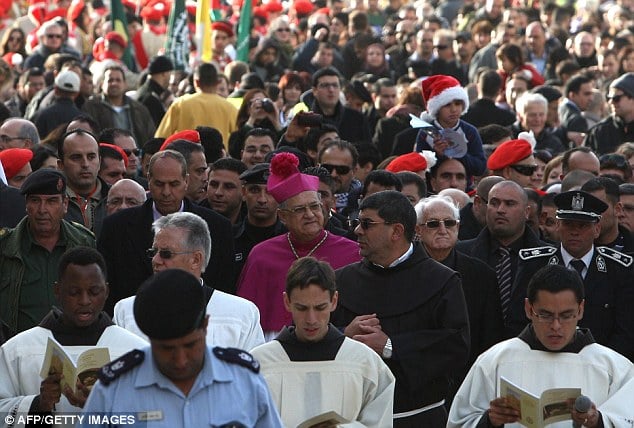

Practical Visitor Tips
A little preparation goes a long way when visiting the Church of the Nativity. From planning the timing of your trip to navigating local customs, practical tips can help you focus on the wonder of the experience rather than logistics.
Planning Your Visit
For the most rewarding experience, consider visiting in the shoulder seasons—spring and autumn often offer fewer crowds and milder weather. Early mornings are ideal for exploring the basilica and grotto with a sense of calm and reflection.
If you’re combining destinations, Bethlehem pairs beautifully with Jerusalem or the Dead Sea. Planning a thoughtful itinerary allows you to experience the spiritual and historical richness of the region without feeling rushed.
Pro Tip: Allocate extra time for checkpoints and local traffic. Even seasoned travelers find that a relaxed approach transforms the visit into a genuine pilgrimage rather than a hurried sightseeing tour.
Local Amenities
Bethlehem offers a range of amenities for visitors, from comfortable hotels and charming local restaurants to souvenir shops featuring handcrafted items and Nativity-inspired art. Guided tours—whether private pilgrimages or small group excursions—can add historical context and bring the stories of the church to life.
For families or Nativity enthusiasts, I often suggest choosing a tour that highlights historical Nativity traditions or explores artistic features of the church, helping everyone connect with the site in a meaningful way.
Safety and Cultural Etiquette
Respecting local customs and religious practices is essential. Modest clothing, mindful behavior in sacred spaces, and observing photography guidelines will ensure a positive experience for everyone.
Security is visible but routine; staying patient and aware is the key. Approach checkpoints and bustling areas with calm, and use them as an opportunity to reflect on the journey itself. I’ve found that even small moments of attentiveness can turn logistical challenges into part of the pilgrimage experience.
Insight for Nativity enthusiasts: Thinking about cultural etiquette and careful planning also applies to your home Nativity displays. Arranging figures thoughtfully, creating a respectful and engaging setup, and including children in the process mirrors the care and reverence seen in the Church of the Nativity itself.
For those looking to enrich their visit, pairing travel with books or guides on Bethlehem’s culture, religious festivals, and historical traditions adds depth and makes every step of the pilgrimage feel connected to centuries of devotion.
Conclusion
Visiting the Church of the Nativity in Bethlehem is like stepping into a living tapestry of faith, history, and culture. Every mosaic, fresco, and chapel tells a story—stories that have shaped Christianity and inspired pilgrims from around the world.
Whether your journey is driven by spiritual reflection, historical curiosity, or a love for Nativity traditions, thoughtful planning can transform your visit into an enriching and unforgettable experience. Embrace the history, honor local customs, and take time to reflect on the centuries of devotion that fill this sacred space.
For families and Nativity enthusiasts, observing the care and reverence here can even inspire how you set up your own family Nativity set or outdoor Christmas display, bringing a touch of Bethlehem’s magic into your home.
Ultimately, the Church of the Nativity reminds us that history, art, and faith are not just preserved—they are lived, shared, and celebrated. Each visit is more than sightseeing; it’s a chance to connect with a timeless story that continues to resonate across generations.
